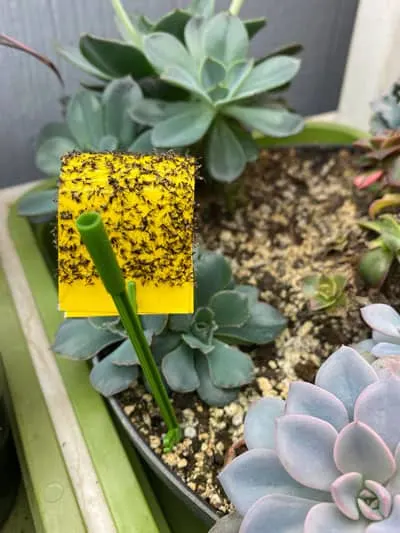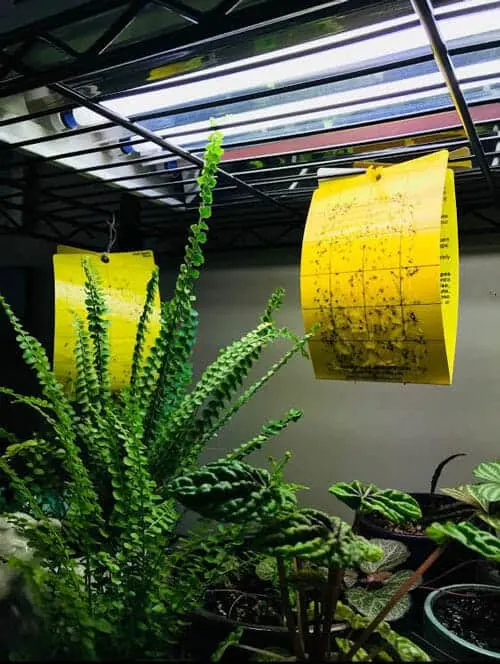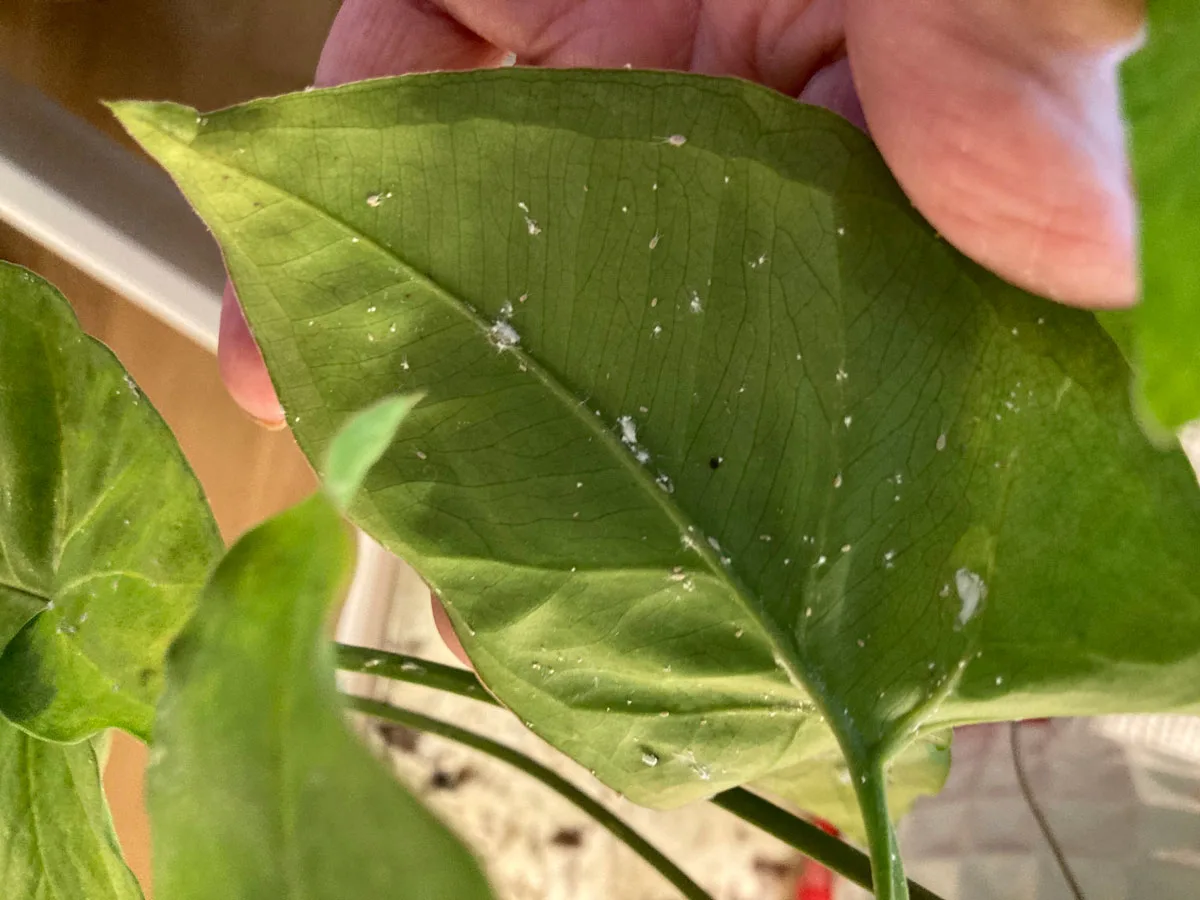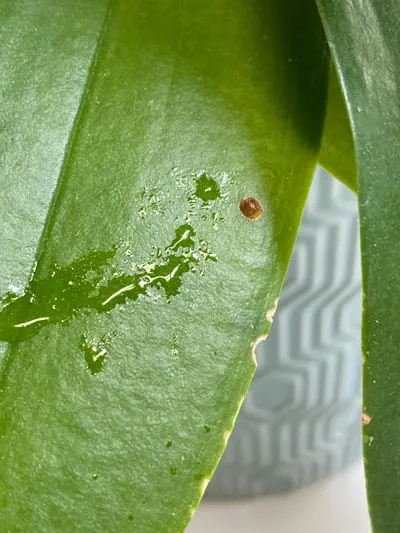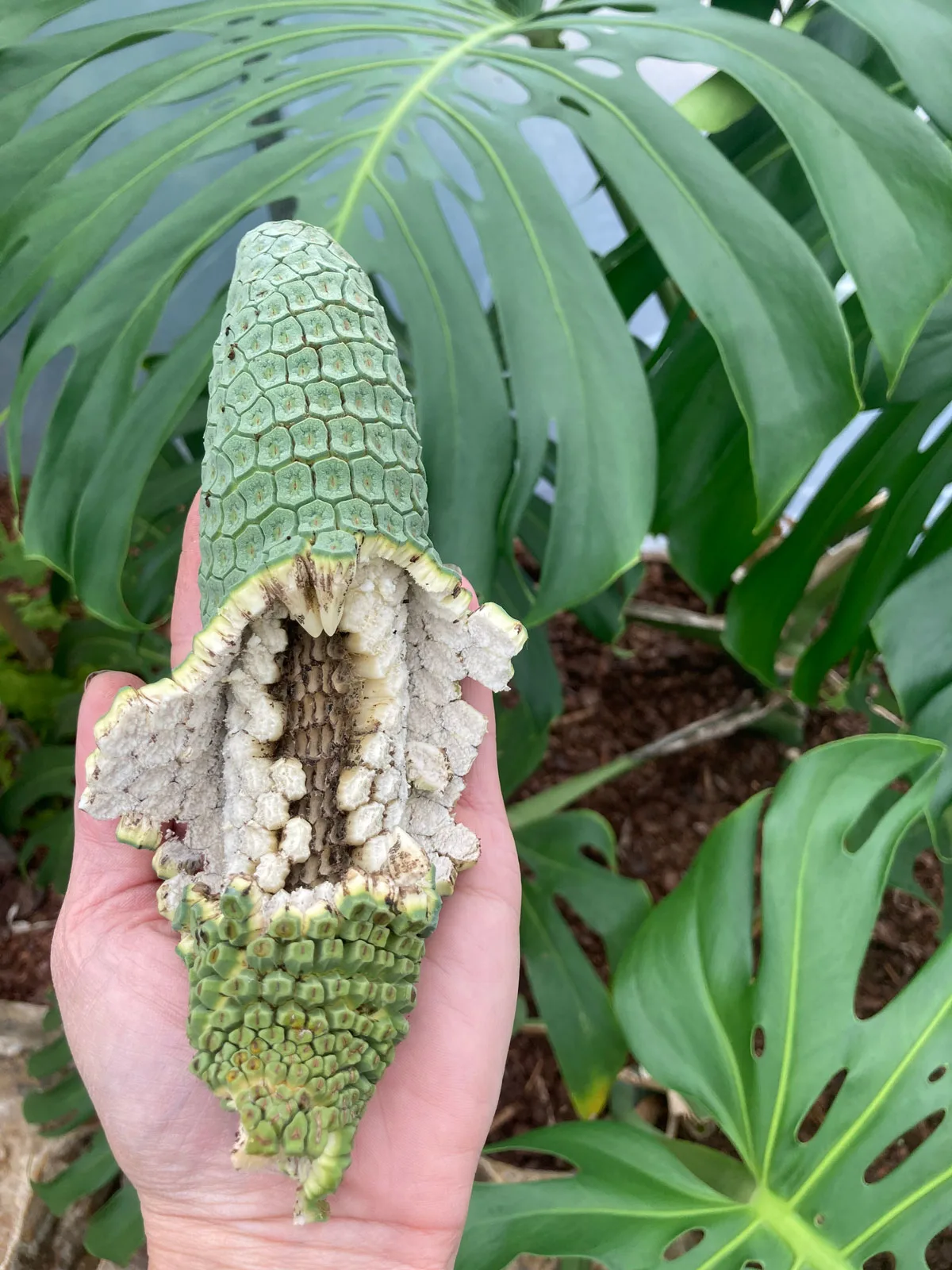Some of the links in this post may be affiliate links.
If you’ve never grown Pinguicula species, you are in for a treat. These are easy to grow, carnivorous plants and are truly a delight! They also stay small, so they’re perfect for warm, sunny windowsills where space is at a premium. They also catch fruit flies and fungus gnats and they flower. What more can you ask for?
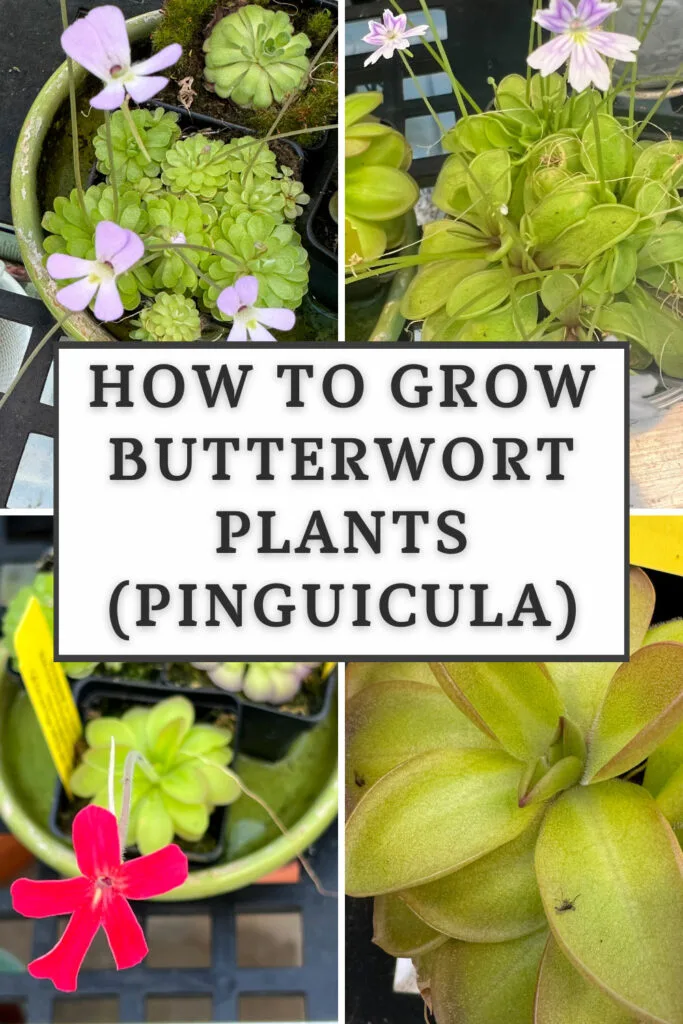
Keep reading to discover all about how to care for these unusual plants.
Table of Contents
BUTTERWORT PLANT CARE
Pinguiculas have a sticky dew on their leaves and this is how they lure and catch insects, which is great if you have a fungus gnat problem! These are carnivorous plants, and once the bugs are trapped on the leaves, the plant will digest them!
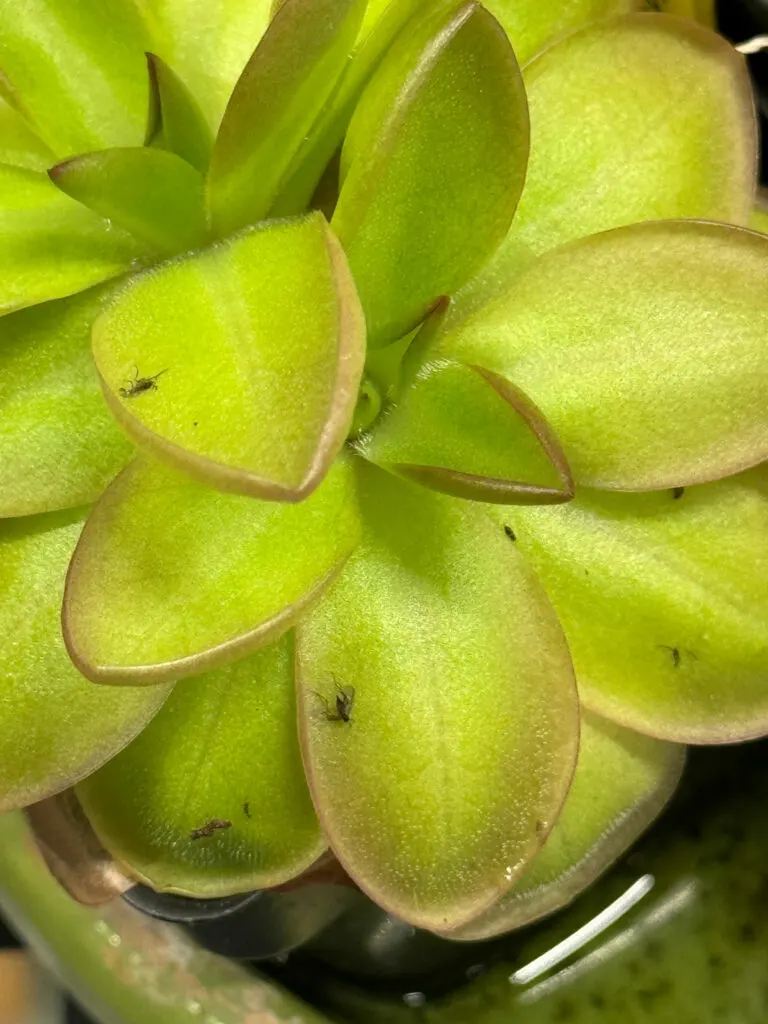
Here are 5 important Pinguicula care tips that are necessary to know when growing these plants.
1. LIGHT
Pinguicula can take a good range of light. Indoors, they will do best with at least 3 hours of direct sun and up to full sun all day.
Many pings, as they are affectionately called, will turn a slight purple or pink color when they have more sun. If you grow them in lower light, you may not see this, and that’s ok.
SOME direct sunlight is needed for best results, and if you don’t have any sufficiently bright windows, you can always grow them under grow lights. Use your grow lights for 12 hours a day.
So make sure to pick a sufficiently sunny windowsill such as an Eastern facing window, Western facing window, or even a southern facing window (if you’re in the northern hemisphere, otherwise you would choose a northern facing window).
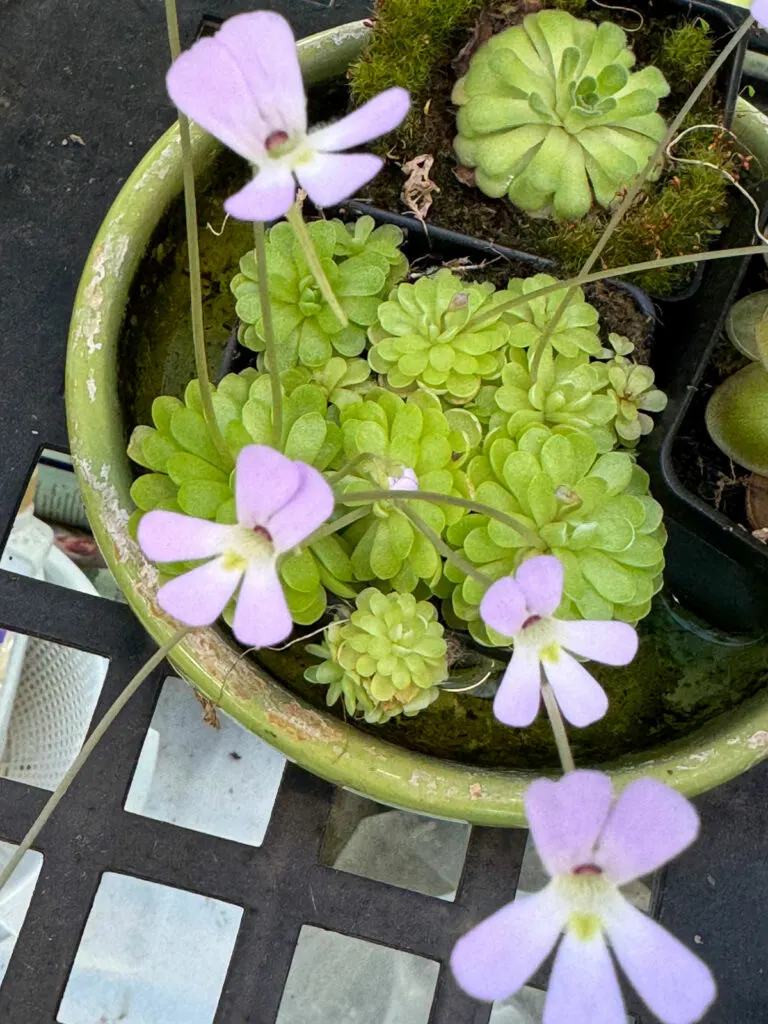
2. POTTING MIX
Don’t use plain potting mix for Pings. They actually like a pretty rocky or sandy potting mix. To keep it easy, I’d recommend just buying the Pinguicula mix from California Carnivores. It’s a no brainer and you don’t have to worry about if you have the right mix or not with these plants.
Their mix contains a mixture of sand, peat moss, pumice and perlite. It is very porous.
If you want to mix your own, you can do equal parts peat moss, coarse sand, vermiculite, pumice, and perlite, but it may just be easier to purchase the mix that I mentioned above.
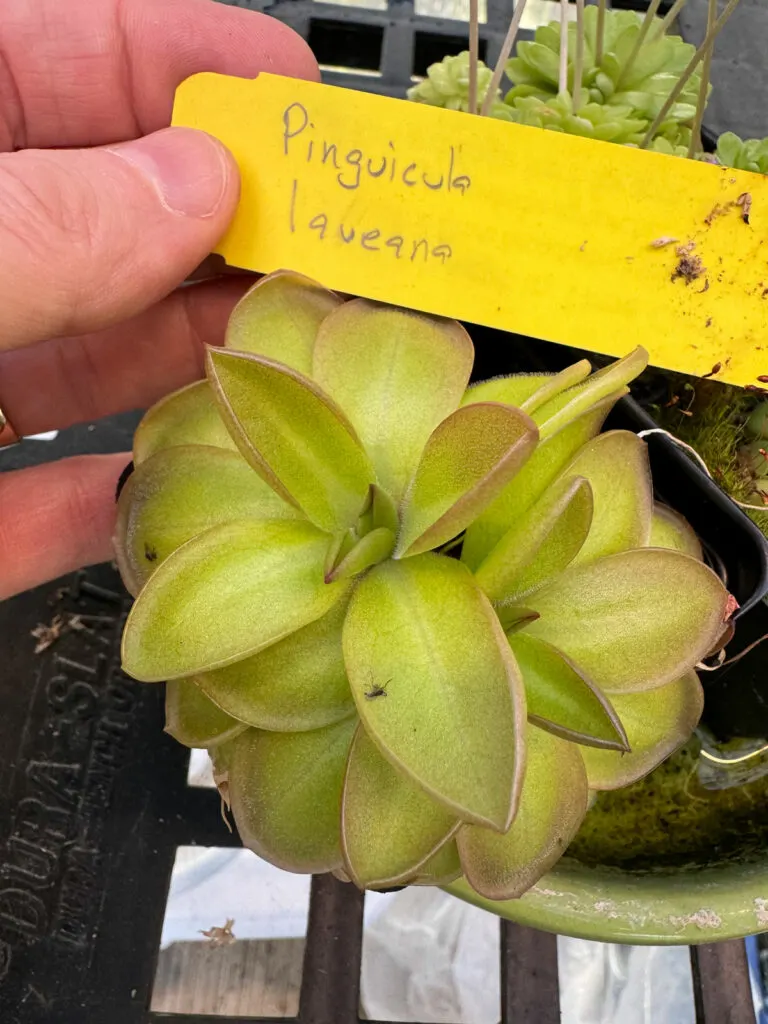
3. WATER
TYPE OF WATER
Do NOT use tap water for Pings or for any other carnivorous plants like pitcher plants, Venus flytrap, etc. They like very pure water with very little to no salts or minerals.
You have a few different options that you can use to water your Pings:
- Distilled water
- Reverse osmosis (RO) water
- Rain water
But if you’re like me and you don’t want to constantly buy jugs of distilled water, set up an RO water system or collect rain water, I have an alternate system and I’ve been using this on my Pinguicula plants for a long time now.
Simply get a Zero water filter. Check out my blog post on all about how to use a Zero water filter for any of your plants that need pure water.
It eliminates that vast majority of additives in tap water. It’s almost as good as distilled, and so much easier to manage having a constant supply of water.
Do not use Brita water filters because these do not do a sufficient job. You can not compromise on water quality for these plants.
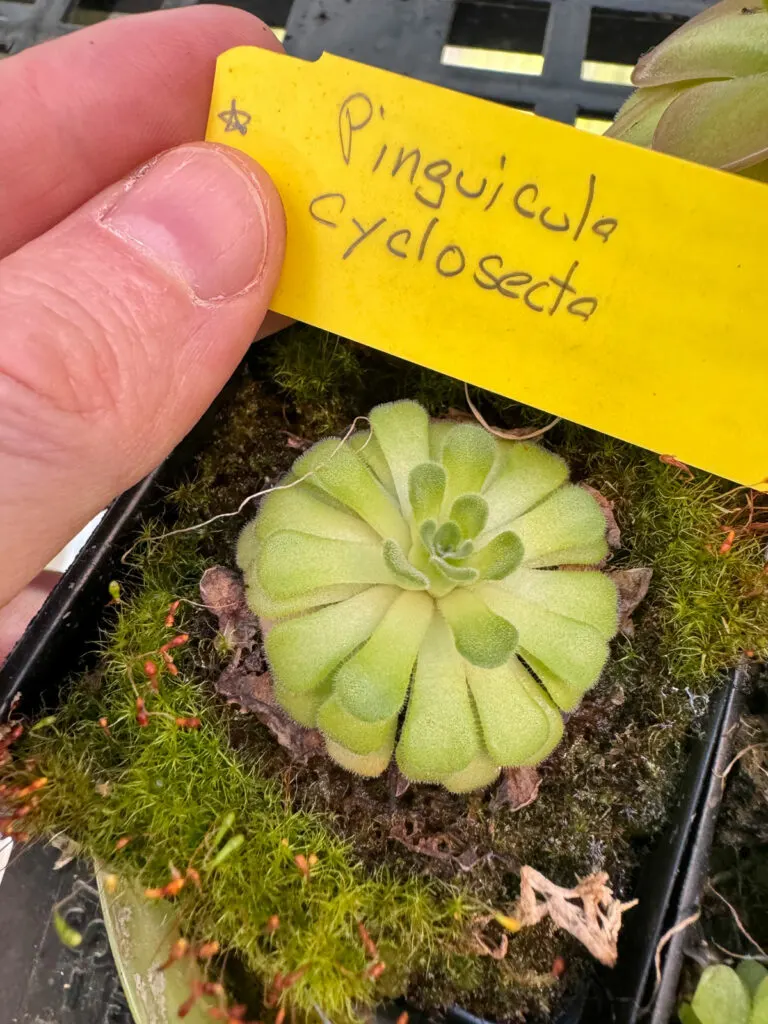
HOW TO WATER PINGS
Most growers will use the tray method of watering Pings, but it also can depend on the time of year. I’ll explain shortly.
There are many different climates that Pings grow in, and their native habitat ranges anywhere from North America, Central America South America, parts of Africa, Europe, and Asia. Most of the ones that are popular to grow indoors are the Mexican pings.
Most of the Mexican/tropical pings will go into a winter “succulent” phase and watering should be adjusted during this point. So how do you water pings?
For most of the year, I keep my pings in a tray of water. The bottom of the pot is literally sitting in about 1/2 inch of water or so (from my Zero water filter).
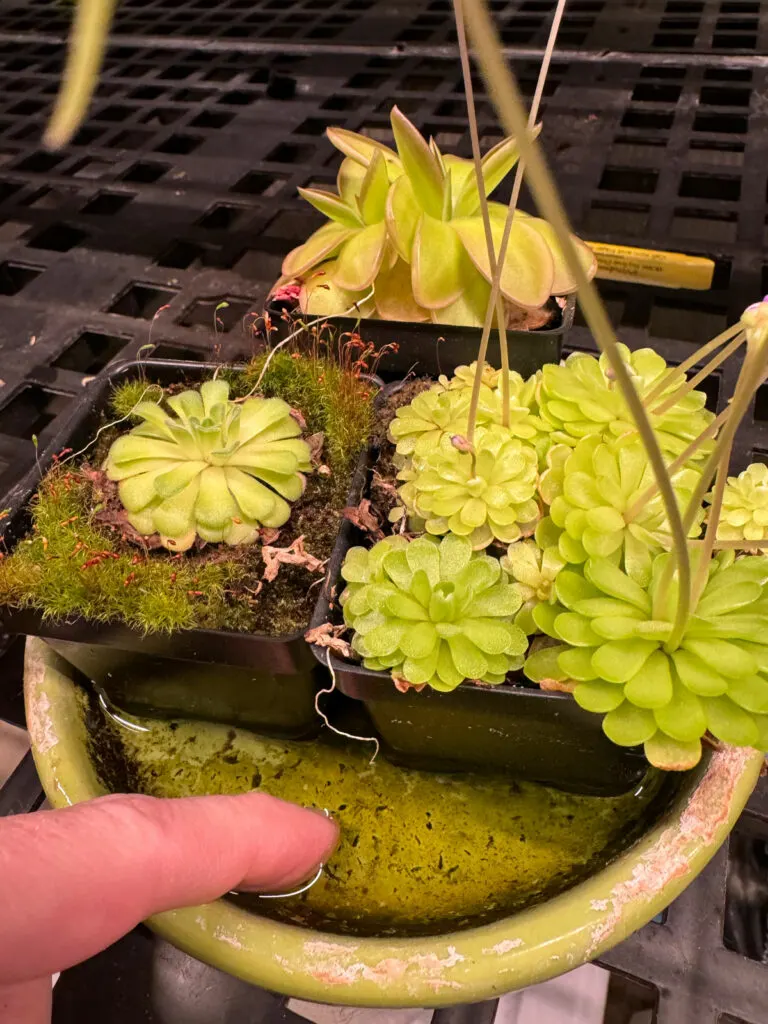
The potting mix will draw in water through the drainage holes. They require moist soil during the growing season. Keep an eye on the water level and don’t let the soil dry out during the growing season.
I learned from California Carnivores that Pings will go into their “dormant succulent” phase on their own, and you can see the difference in the photo below.
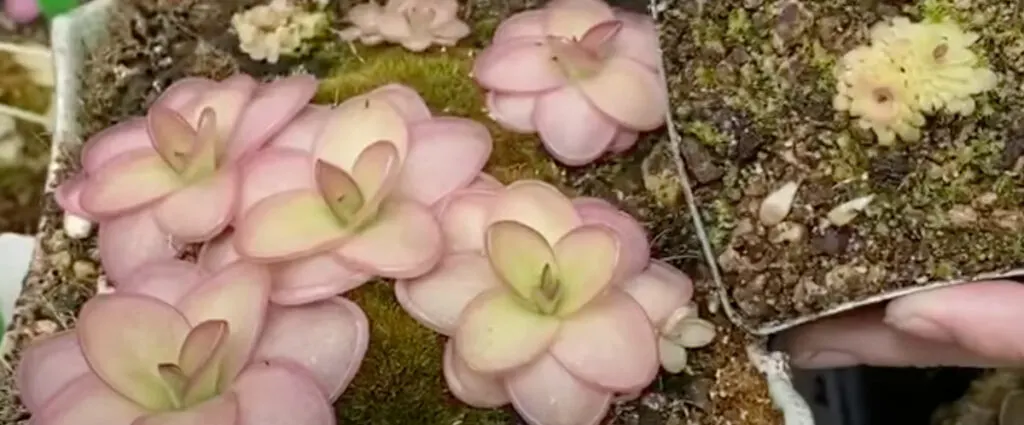
The single plant in the pot on the right is actually the same plant as all the rest on the left! The one on the right is in its succulent phase of winter dormancy.
If you see the plants start to look like the one on the right, you should reduce water during the winter. If you DON’T see the rosettes change, you don’t have to reduce watering.
If you DO see the foliage change during the winter months, let the plant go dry for about a week or so, and then you can give them a watering from the top (but don’t let them sit in water). Then you can resume regular watering (where they sit in water) starting in mid to late February or so.
The interesting part about the foliage during the dormancy period is that it is not carnivorous, so during this time, they don’t trap flies. Once the normal foliage reemerges in the Spring, the foliage will become sticky again and catch small insects.
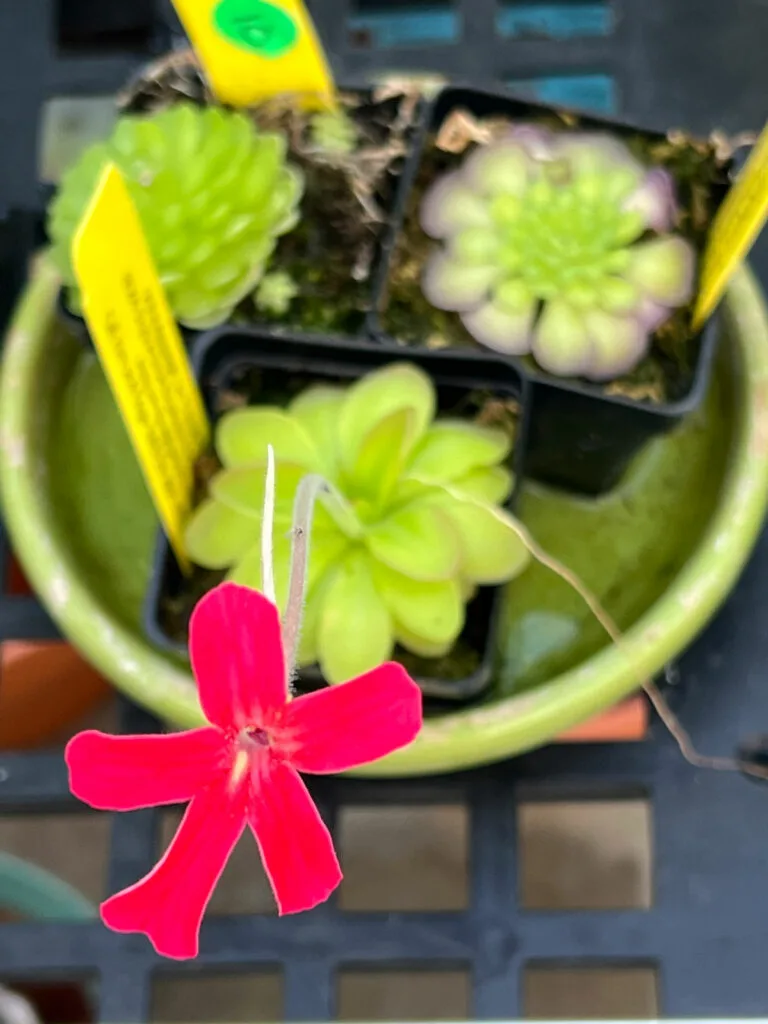
4. FERTILIZING
I’ve had my Pings so far for over a year and I haven’t fertilized them yet, but I’m going to start in the Springtime. At the time of writing this post, it is almost winter so I’ll start in March or so.
They catch their own food, but if you find that your plants are not catching many fungus gnats or bugs indoors, you will want to fertilize a bit.
California Carnivores recommends using Schultz Cactus fertilizer. Mix 14 drops into a quart of water (distilled, rain, RO, or Zero Water filtered), and just mist the foliage.
Once a month works well during the growing season (starting in late winter or early Spring and continuing through late Fall or so).
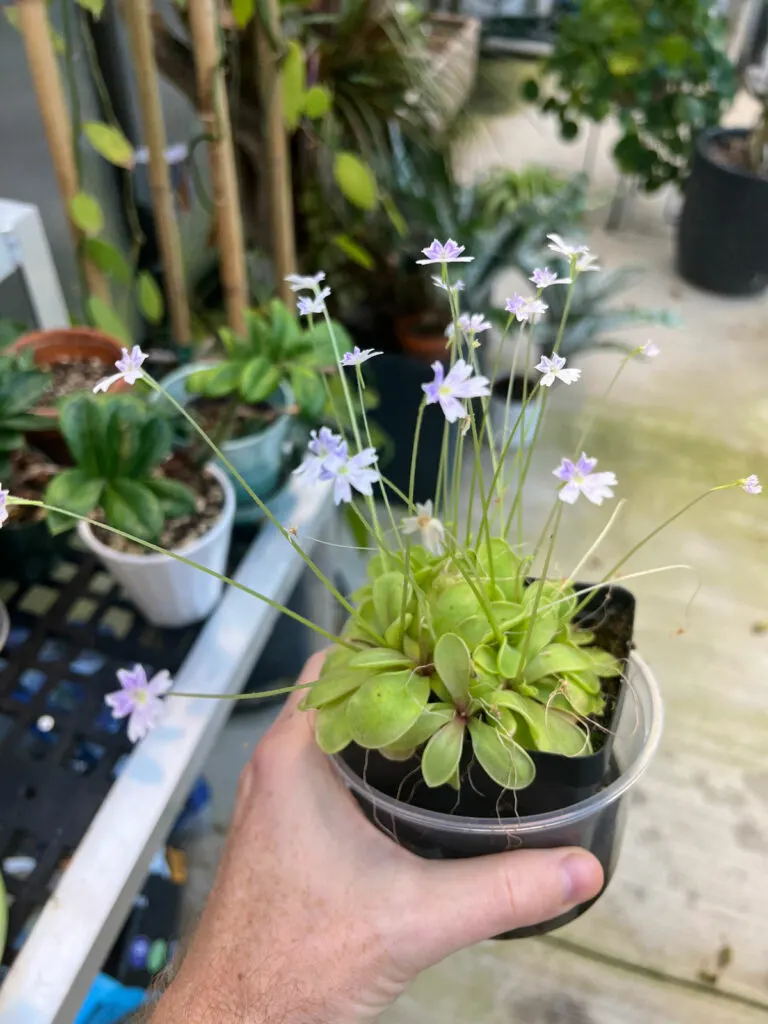
5. HUMIDITY AND TEMPERATURE
Most of the species of butterwort that are sold and popular are the Mexican species, so they like it warm. If you are comfortable indoors, they will be too. Get to know where your Pinguicula spp are from.
An easy way to tell is to type in the species into Plants of the World Online and it tells you where the species is from. If you ordered online from a good grower, they will also tell you what type you have.
It is important since the care can be very different depending on where your plants come from, but like I mentioned earlier, most of the ones sold for hobbyists are tropical butterworts so you can follow the care in this post.
As far as humidity goes, these plants do like high humidity. You shouldn’t be too concerned though because for most of the year, they’ll be sitting in water anyway, so this will help to create a humid microclimate.
I hope you’ve enjoyed this post on Butterwort plant care. Pinguiculas are such wonderful plants and if you are looking for something different, look no further!


